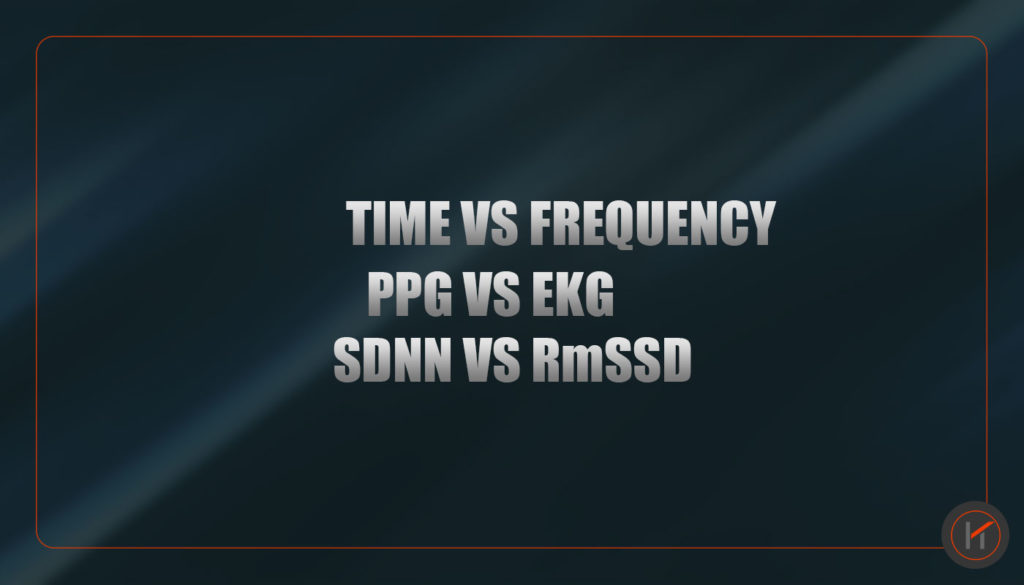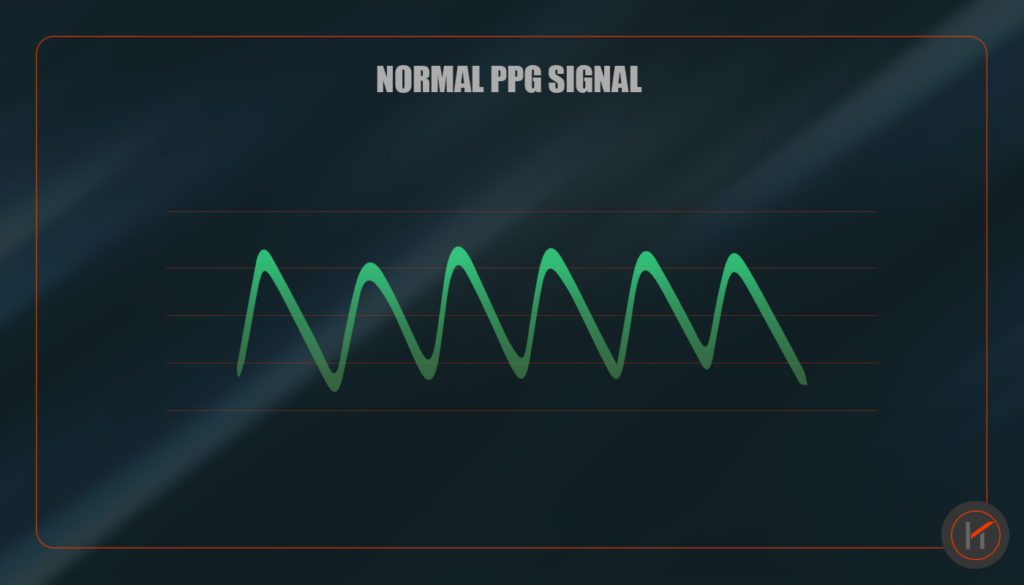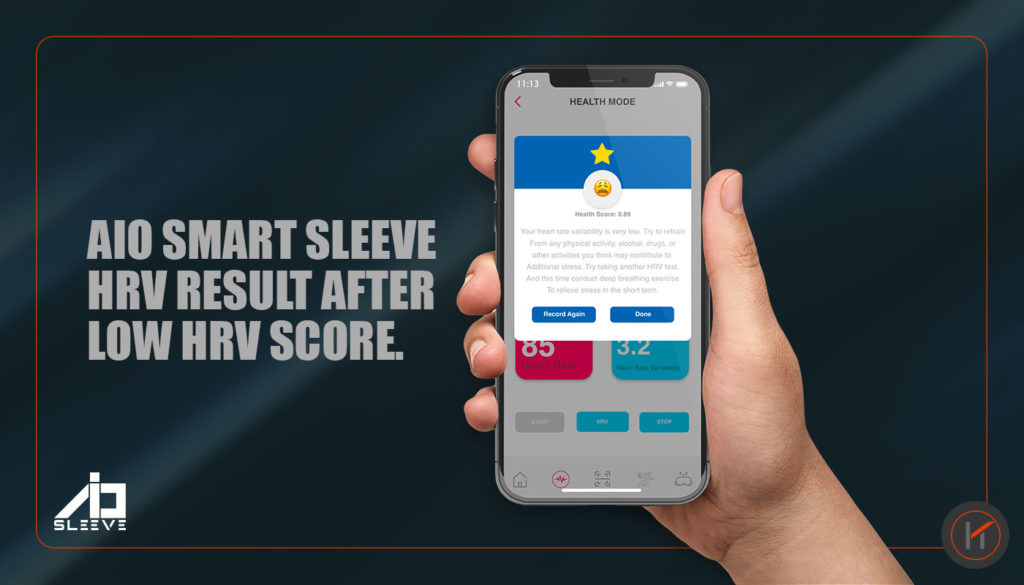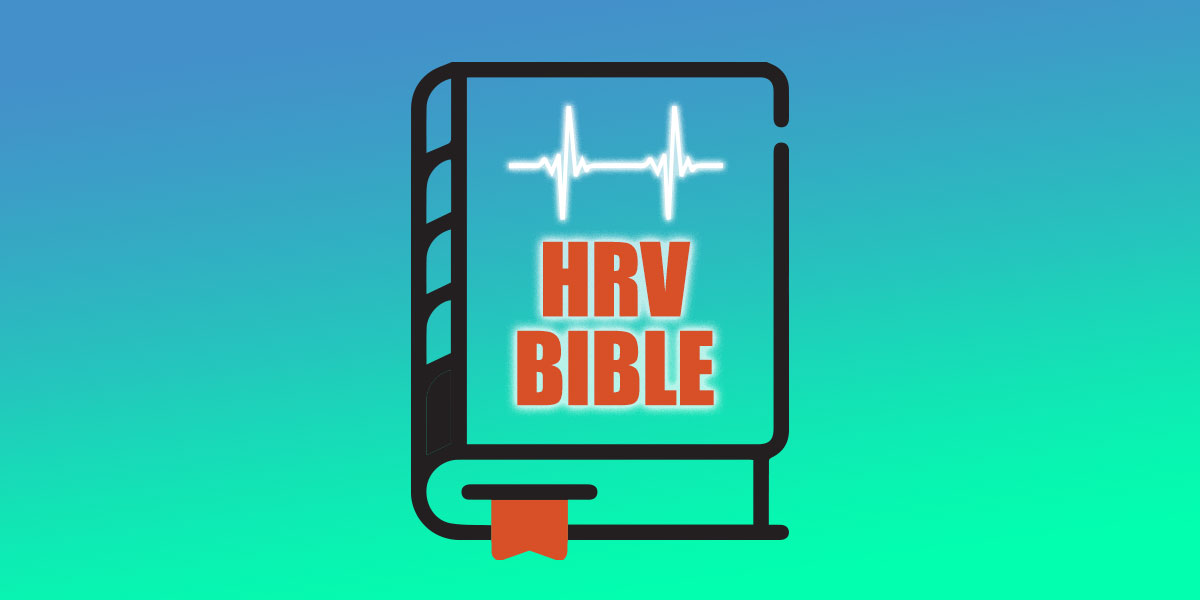In this article, we will answer some of the most burning questions regarding heart rate variability. We will discuss what a normal HRV range looks like as well as why you need to be monitoring your HRV every day. We’ll debunk some HRV myths and really provide an accurate picture of what heart rate variability is and why it’s crucially important.
Heart rate variability is a remarkable tool. It can take a while to understand but once you do, you realize it for what it is: a potential life saver and a tool that can certainly improve your overall health. Gone are the days of constant doctor visits, physicals and numerous blood samples. HRV provides a real-time biofeedback, a quick health check, and it’s with you at all times.
As interest for heart rate variability skyrockets in 2022, so do the questions. While HRV enthusiasts dive deeper into its benefits, newcomers are also curious. Studies and clinical trials have been conducted for decades from many different subject fields. From diabetes, nervous system, PTSD, cancer, autism, strokes, epilepsy, viruses and so much more. Studies show that HRV is a strong predictor of many health conditions and can be used as an early detection device by studying the normal HRV range of millions of subjects.
Today, we will focus on the consumer side of things. How can the everyday lad or gal use heart rate variability to their benefit? Let’s decode some of the high-brow medical talk and answer the common questions surrounding HRV.
1. HOW DOES HRV WORK?

This is quite a loaded question so let’s take it from the beginning. Heart rate variability is defined as the slight variation in one’s heart rate, beat-to-beat, in milliseconds. Your heart is not supposed to beat like a metronome (having the same exact distance from one beat to the next). This ‘variability’ is a good thing. It means you are alive. If you heart WAS beating like a metronome, you are probably close to pearly gates. This method is called Time Domain Heart Rate Variability.
There is another method of extracting HRV and it’s called Frequency Domain. Instead of time units, it uses frequency to gauge your hearts activity. There are high and low frequencies emanating from the heart, and based on that, HRV is calculated. It’s a lot more complex and less practical, so for the sake of this article, we will focus on the Time Domain Method.
PPG VS EKG

In order to calculate an HRV value, we need an input signal from which HRV will be calculated. There is no such thing as an HRV sensor rather HRV is calculated from the data received from either a PPG sensor or an EKG signal.
PPG is photoplethysmography. Try saying that 5 times fast. It’s also known as an optical sensor. If you’ve ever worn a Fitbit or and Apple watch, you would see flashing green and red lights on the side touching your skin. One of those is a PPG sensor. It flashes a light through your skin and measures the changes in blood volume that is pumped out by your heart. If you plot those ‘pumps’ you will see something similar to the below graph. The peaks of those waves is your heart rate.

EKG / ECG on the other hand measures the electrical activity of the heart itself. As opposed to PPG, EKG takes the data directly from the source (so to speak). This is done by strategically placing a minimum of two electrodes on your body, connecting the two points and acquiring the data via wearable device.
The main thing to consider when discussing the difference between EKG and PPG is the sample rate. This refers to how many times per second is a device acquiring data. In the case of PPG sensors, they tap out at around 50 samples per second. Whereas EKG minimum sample rate must be 300 samples per second. On average, with EKG you get 7X more data points than PPG which has a huge effect on accuracy in its favor.
EKG is widely considered to be the much more accurate option in terms of HRV monitoring. In a study conducted by the European Journal of Investigation in Health, Psychology and Education, they called HRV the “Gold Standard for HRV Measurement.” The study was testing the validity of commercial HRV products.
RMSSD VS SDNN
Once the data is taken from the sensors, there must be a way to break it down and turn it into an understandable format. There are two main formulae that are used to calculate heart rate variability; RmSSD, which is the root mean square of successive differences, and SDNN, which is the standard deviation of NN intervals. It sounds complex but actually quite simple.
SDNN basically measures your HRV within a 24 hour period, calculates the average value of your HRV (in milliseconds) and then tells you how far your HRV is from that average at any point in the day. It’s technically not in real-time and can be filled with false positives that can skew your results. For example, recording HRV during workouts will push your average downwards (it’s actually pointless to measure HRV during exercise because it will always be near 0). Or recording HRV during sleep, which will skew your HRV normal range higher, giving you a false sense of security.
Generally believed to be the more effective method is RmSSD. This method actually measures the time difference between each successive heart beat, in real-time. So if you record HRV using RmSSD, you are seeing a real result at that exact moment in time. The number that you end up seeing will depend on the company and product. Whereas WHOOP turns the result into a score out of 100, KOMODO’s AIO Sleeve shows you a 5-star score. Showing the same result with their own unique spin on things.
2. WHAT DOES HRV TELL YOU
Heart rate variability is like having a check engine light but for your body and internal health. HRR provides you with a snapshot of your overall health at any point in time, in a broad sense. But technically, it gives you insight into the quality of operation of your autonomic nervous system (ANS), your nervous system, your immune system and any other system you can think of.
Your day is filled with thousands of ‘stressors’ per day. These are events / instances which put your body under stress. Anything from digestion, exercise, stress/anxiety, anxiousness, medication, heart issues and many more. All of these stressors pass through the autonomic nervous system and HRV is able to capture these stressors. If your HRV is below its normal range, you know you know your ANS is compromised. The good thing is that you will be able to isolate these incidents and make improvements to your daily routine.
3. WHAT IS A GOOD HRV VALUE? HRV NORMAL RANGE
There is no such thing as a normal heart rate variability. You should never compare your HRV to that of others, only compare it to your HRV from yesterday. Since many products have different scoring systems, you should only look to beat your high score from the prior day, week and month.
For example, HRV lowers with age. If you have underlying medical conditions, that will lower your HRV as well. So, take all things into account. First thing you will need to do when you get an HRV monitor is establish a Baseline (or average). Go through you daily routine as you normally would and measure HRV throughout the day for a couple of weeks. Once you have figured out your baseline, now it’s time to change and tweak your daily routine and see if HRV improves day-to-day.
When it comes to an actual HRV value or score, different products do it in different ways. For example, the AIO Smart Sleeve uses a score based on 5 stars to make it easily understandable and fun. While Apple uses milliseconds, which many people have complained about because it’s confusing.
4. WHAT AFFECTS HRV?
Basically, anything that is considered a stressor can have an impact on your heart rate variability score. Anything that brings your HRV below normal range would be considered as having an effect.
‘Stressors’ seems like a pretty broad term. But you need to understand which stressors are present in your life. HRV requires you to think about your surroundings and environment. For example, extreme heat can have a negative effect on your energy levels and thus, heart rate variability. So, if you don’t live close to the equator, maybe it’s not a stressor you need to consider.
Among the other things that affect HRV are poor diet, over-training, dehydration, alcohol, smoking, stress / anxiety, underlying heart conditions, lack of sleep and so much more. It’s up to each individual to really learn about their body and adjust accordingly.
5. WHAT DOES A LOW HRV MEAN?
A low HRV means that your body is being affected by any one, or a combination of stressors we spoke about earlier. A low HRV isn’t necessarily a bad thing. However, if it becomes a pattern, then it could have negative consequences on your overall health.
Think of the saying “stress is a silent killer.” It is 100% true, because if you don’t take care of yourself over time, it’s going to spread to other parts of your body. If you see your HRV below its average range for days, or weeks in a row, it should serve a wakeup call. A low HRV isn’t a bad thing, it’s an opportunity. A chance to look into your health and make long lasting improvements.
6. DOES BREATHING IMPROVE HRV?
Deep breathing exercises CAN improve your HRV score, but only in the short term. This practice is also known as diaphragmatic breathing. When done properly, the deep breaths slow down your heart rate and calm you down. We always recommend our users, if they have an HRV result that is way below normal range, to perform another HRV test right away but with deep breathing.

It’s a great way to practice mindfulness. While the activity of deep breathing can’t provide long-term benefits, it’s the very nature of the practice, if done regularly, that can actually have positive health benefits in the future. Practicing mindfulness daily allows you to take control of your stress, relax and not over think. Think of stress as backed up sludge and oil within your vehicle. It’s going to affect everything from your engine to the control arm. Stress will affect your heart, kidneys, knees and back. Mindfulness practice can negate a lot of this.
7. HEART RATE VARIABILITY AND STRESS, WHAT’S THE CONNECTION?
We’ve spent a lot of time talking about the connection between stress and HRV. Yes, there is significant correlation between high mental stress and a decreased HRV.
There was a time when no one ever talked about stress. It was just this thing that you can’t identify. There’s no device or medical scan that tells you if you’re stressed. You are just supposed to ‘toughen up.’ But it is real, and HRV is one of the biomarkers that can help identify it. It’s quite remarkable if you think about it.
8. EFFECTS OF HEART RATE VARIABILITY BY AGE
It’s a well-known fact in the HRV community that as you age, heart rate variability has a tendency to decrease. It’s a rule of thumb. This goes to a point we made earlier: everyone’s HRV will be different and you should only base HRV improvements on your own results.
This doesn’t mean that everyone who’s 25 years of age will have similar HRV scores. We do know that the older you get, the more difficult it is to recover from activity, illness, alcohol, etc. So, you need to be extra cautious and consider optimizing your HRV if you want to age gracefully.
9. HOW DO I ACTUALLY MONITOR HRV, WHAT PRODUCTS ARE OUT THERE?
There are many excellent devices out there that monitor HRV like WHOOP, Oura, Polar, The AIO Smart Sleeve and other. Each device puts their own unique spin on it based on what they believe is important.
The AIO (All-In-One) Smart Sleeve is the ultimate HRV monitoring device. It is a smart compression sleeve with integrated EKG capabilities that allow for easy HRV tracking throughout the day. The sleeve pairs with the AIO Health App and provides a unique and in depth approach to heart rate variability tracking.
If you go in to battle without a strategy, it’s a sure-fire way to lose it. The same thing goes with HRV. Simply looking at your HRV score does nothing for you. The AIO Health App helps you understand you’re HRV and how its trending throughout the day. By using ‘events’ such as morning readiness, before food, after food, before exercise, and before bed, you can pinpoint highs and lows throughout the week. This gives you actionable data and real life insight, which is the most important thing. It’s all about how YOU adjust, and the AIO Sleeve gives you the tools to do that.
10. WHY SHOULD I TRACK HRV?
Our health and wellness are a very tricky thing. Adverse health issues often sneak up on us and we don’t know of them until it’s too late. Heart rate variability provides insight into the most complex and important parts of our bodies; our brain and our heart. With HRV, it’s like having a daily checkup, and you can adjust your daily routine in real-time. It’s absolutely priceless. Human optimization was never a real possibility 20 years ago. But now you have all of the tools available to live a healthy and long life.


Bedankt voor je inzichtelijke artikel over hartslagvariabiliteit (HRV). Als ervaringsdeskundige in voeding, sport, mindset en meditatie, behandel ik vaak cliënten met stress- en gezondheidsproblemen. Ik ben het eens met je punten over HRV als indicator van autonome zenuwstelselgezondheid en wil toevoegen dat voedings- en levensstijlinterventies HRV positief kunnen beïnvloeden.
Vriendelijke groeten,
Martijn Meeuwis